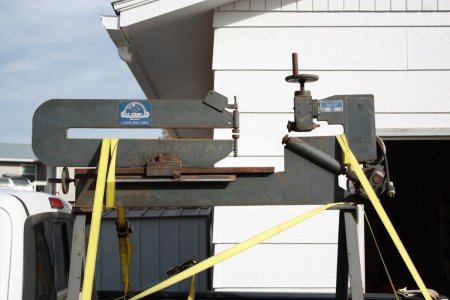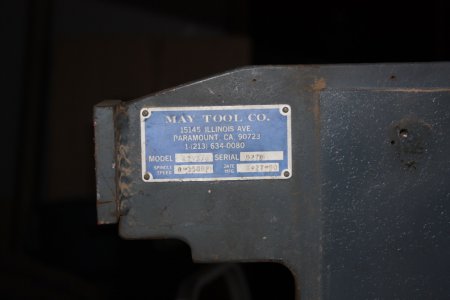Been watching Craigs list for goodies.
This came up and was just a bit over 110 miles away. Most anything is that far from where I live so I jumped on it.
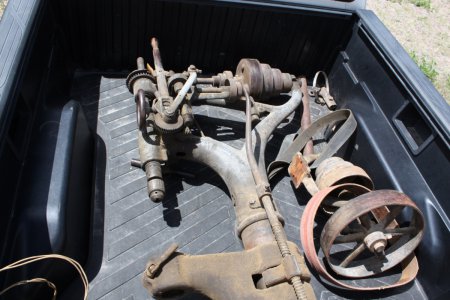
Looks as though it might be in the original color, Light Blue-Grey.
It fit in the 6 foot truck bed with just a few inches to spare and that was with the spindal lowered.
The four step sheave on the right mounts to the base. Belt is three inches wide.
Was intrigued that it has power feed. This feature has been disconnected and no belt is with it but all parts are still mounted and it should be easy to get it working.
The spindal is raised/lowered with a small hand wheel which is geared fairly low. Nice for infeed but slow when setting up.
The table is raised/lowered with the screw running down the side of the casting. It's missing the handle.
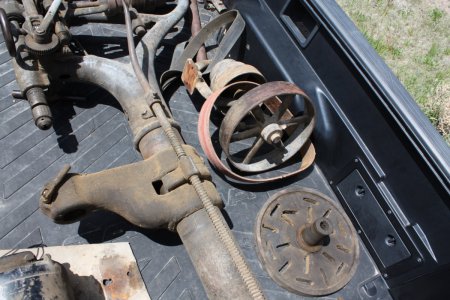
Didn't think to turn the table over for this pic but its in fair condition.
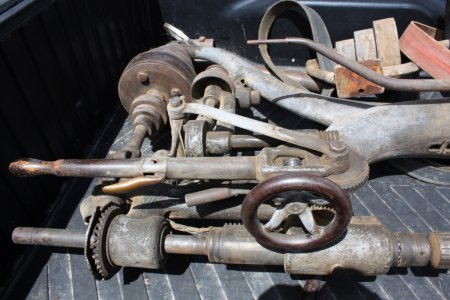
Will have to go through the spindal and replace some or perhaps all the bushings. Still, its fairly tight with little movement on any of the shafts. It could be cleaned up and used without any major work and still out-preform most China machines.
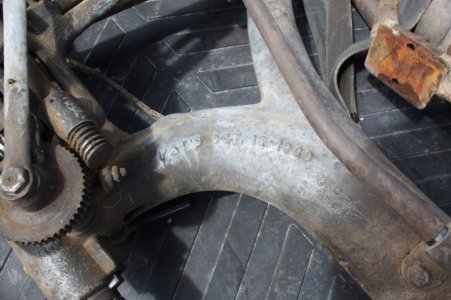
PAT'D OCT 16 1900
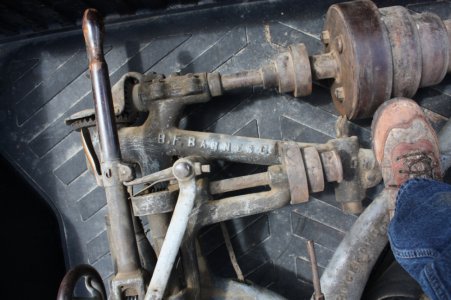
B. F. BARNES CO
Haven't gotten this beast unloaded yet and will have to research it's its history.
I suspect the fork , beside my boot, was to operate a clutch so the machine could sit idle while the overhead belt line was turning.
Most of those components have been removed and it was converted to motor drive.
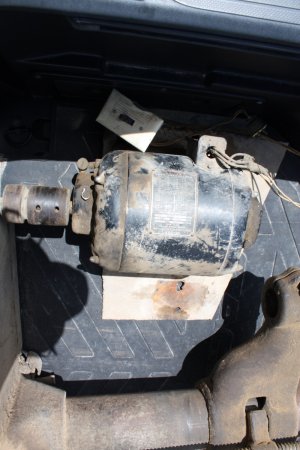
This ONE HP motor is several times the size of a modern motor. It has bronze bushings and felt wicks.
It drives the 3" wide belt and mounts side by side with the sheave set on the base of the stand.
This is project number 5 on my list so it might be a couple of years before I start the rebuild.
Was really happy to find such a nice piece of Americana iron.

